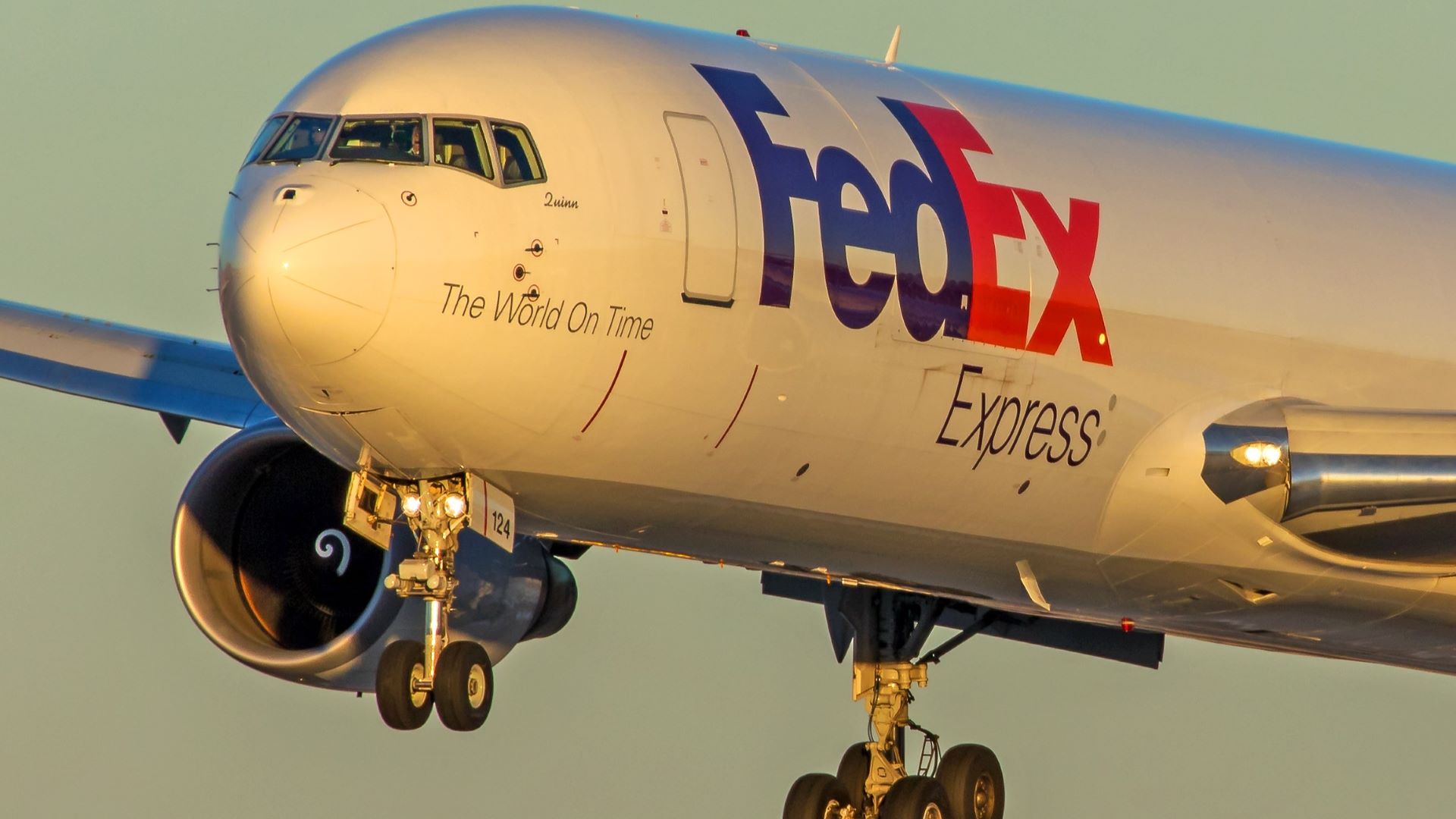FedEx’s broad organizational and network redesign the past two years increased the integrated logistics provider’s adaptability, which is paying dividends by delivering added customer value in the face of shifting trade, regulatory and structural industry changes, top executives said.
Another theme that emerged from an in-person event for Wall Street analysts in New York last week is management’s focus on high-quality B2B business as the primary driver of revenue growth.
As the largest customs broker in the United States, FedEx (NYSE: FDX) has been able to ramp up service for an influx of e-commerce customers looking help paying customs duties and formally filing entries after the Trump administration’s rapid cancellation this year of duty-free treatment for low-value B2C parcel shipments, CEO Raj Subramaniam said at the Baird Industrial Conference last week.
FedEx is also moving quickly to leverage its vast shipping data to deploy applications that simplify cross-border trade execution, as companies rethink production footprints and supply chain patterns. Towards that end, the company is using its voluminous historical trade data and generative artificial intelligence to predict classification codes.
“We’re helping our customers from a demand perspective, realigning supply chains and sourcing, and from a technology perspective, helping them to clear customs in a more complex world,” he said.
FedEx previously reported that the termination of benefits for direct-to-consumer shipments cut first-quarter operating income by about $150 million, but Subramaniam said the overall impact on the company will be limited because 70% of international exports move through B2B channels.
FedEx’s ability to quickly interpret regulatory and policy changes in Washington and elsewhere, powered by a large trade compliance and legal department, enables the company to quickly pivot services on behalf of shippers, officials explained. U.S. importers are also dealing with huge import bills associated tariffs imposed on China, the European Union, Mexico, Canada and other trade partners this year.
FedEx in 2023 launched a wholesale transformation campaign to eliminate excess capacity and improve profitability in response to slower parcel growth and investor expectations. Operating companies are no longer operating independently, but in coordinated fashion under one corporate structure. The company is in the process of integrating the legacy Express and Ground networks in the U.S. after completing a similar consolidation in Canada. The Network 2.0 plan is to combine about 650 Express and 650 Ground locations into 850-to-900 combined locations. FedEx is about 25% done with the network integration and expects to complete the job by the end of May, management said during a separate event hosted for Wall Street analysts.
The international version of the network streamlining, called Tricolor, is designed to better reallocate parcels and freight by segmenting aircraft utilization, based shipment urgency, and coordinating air and less-than-truckload networks.
The increased flexibility from Tricolor helped grow U.S. outbound airfreight by 22%, or $40 million, and boost volumes on the Singapore-to-U.S. trade lane, year over year in the first quarter, CFO John Dietrich said. The international network overhaul is proving to be especially useful as FedEx copes with the reduction in capacity from the government’s temporary grounding of MD-11 freighters following the fatal crash of a UPS cargo jet earlier this month. Dietrich outlined several ways in which FedEx has been able to replace the lost capacity.
Executive Chairman Brad Martin, along with Subramaniam and Dietrich, told analysts at a hosted event that high-tech freight, especially to support the proliferation of data centers, and healthcare logistics are key focus areas for modest revenue gains, which together with a more cost-efficient network, will pump up profitability.
Management’s framing of FedEx’s in the historical context of a B2B network with high exposure to the industrial economy, suggests that e-commerce is not considered the path to growth, TD Cowen analyst Jason Seidel said in a research note.
“We expect FedEx to remain selective in B2C/e-commerce business and would not be surprised to see declining contribution to overall mix over time,” he wrote.
FedEx is well prepared for the peak shipping season now underway and expects a modest improvement in year over year and sequential growth in profit, at $4.05 per share versus the $3.83 mentioned in the first-quarter earnings report on Sept. 18, he added.
The company is also ramping up to deliver heavier-weight packages for Amazon under a limited partnership agreed to earlier this year, said Dietrich. During the first-quarter earnings call, management said the onboarding of Amazon business will be complete sometime in December.
FedEx previously reported first-quarter revenue of $22.2 billion, up 3% year over year and $550 million ahead of expectations, and adjusted operating income of $1.3 billion, up 7% from the prior year.
FedEx’s stock price was down 1.5% to $263.43 in late day trading on Monday as investors seem to be watching for macroeconomic improvements that could boost shipping demand. The stock is down 6.4% for the year.
Write to Eric Kulisch at [email protected].
Click here for more FreightWaves/American Shipper stories by Eric Kulisch.
RELATED STORIES:
FedEx plugs transport hole caused by MD-11 groundings
The post FedEx network restructure boosts agility amid shifting trade landscape appeared first on FreightWaves.






















